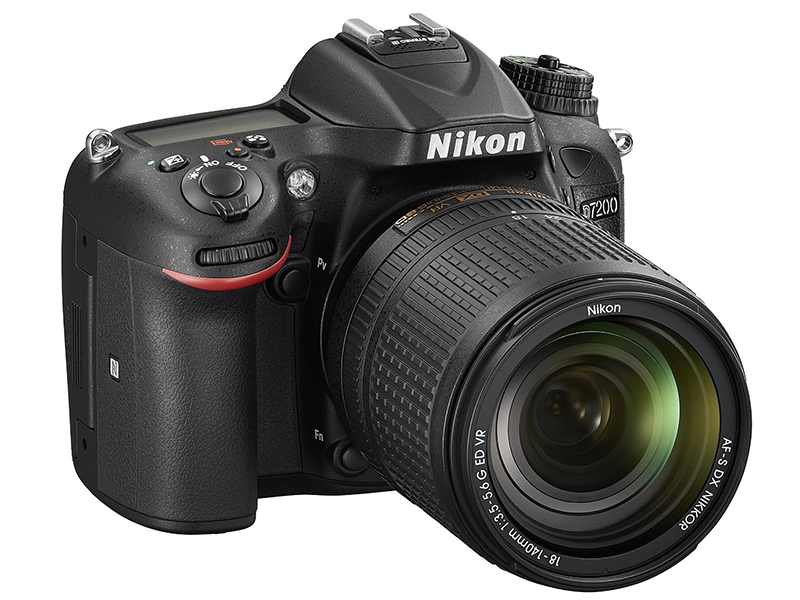Tom's Guide Verdict
With top image and video quality, as well as great design and extensive features, the D7200 is one of the best midrange DSLRs you can buy.
Pros
- +
High image quality
- +
relatively fast continuous shooting
- +
well-suppressed noise at high ISO
- +
weather-sealed body
- +
dual command dials.
Cons
- -
Limited manual exposure control for video capture
- -
shallow handgrip
- -
LCD doesn't tilt or rotate.
Why you can trust Tom's Guide
Who it's for: Advanced amateur photographers who want to step up to a more sophisticated DSLR, as well as pro and semi-pro Nikon owners who want a smaller DSLR.
The D7200 is a strong DSLR candidate for advanced amateur photographers looking to step up their games. An impressive upgrade from the D7100, the Nikon D7200 boasts a number of improvements, including Wi-Fi, a 30 percent faster processor and improved autofocus. At $1,199 (body only; $1,699 with 18-140mm lens), this midrange DSLR offers excellent image quality in a durable body, which is why it made it to our Best DSLRs page.
Design: Sturdy and ready for all-day shooting
Overall, the D7200's relatively compact size, modest weight and ergonomic control layout make it a good fit — whether you're doing a day hike, shooting a wedding or photographing a family get-together.

Put the D7200 side by side with the D7100, and you'll be hard pressed to spot any physical differences. Both bodies measure 5.3 x 4.2 x 3.0 inches and weigh approximately 1 pound, 11 ounces. Paired with the 17.3-ounce, 3 x 3.8-inch, 18-140mm kit lens ($500), the setup is manageable for an easy day of shooting. Constructed around a magnesium-alloy frame, the D7200 feels sturdy and well built. Photographers with larger hands, however, might prefer a deeper grip like that of the Nikon D750.
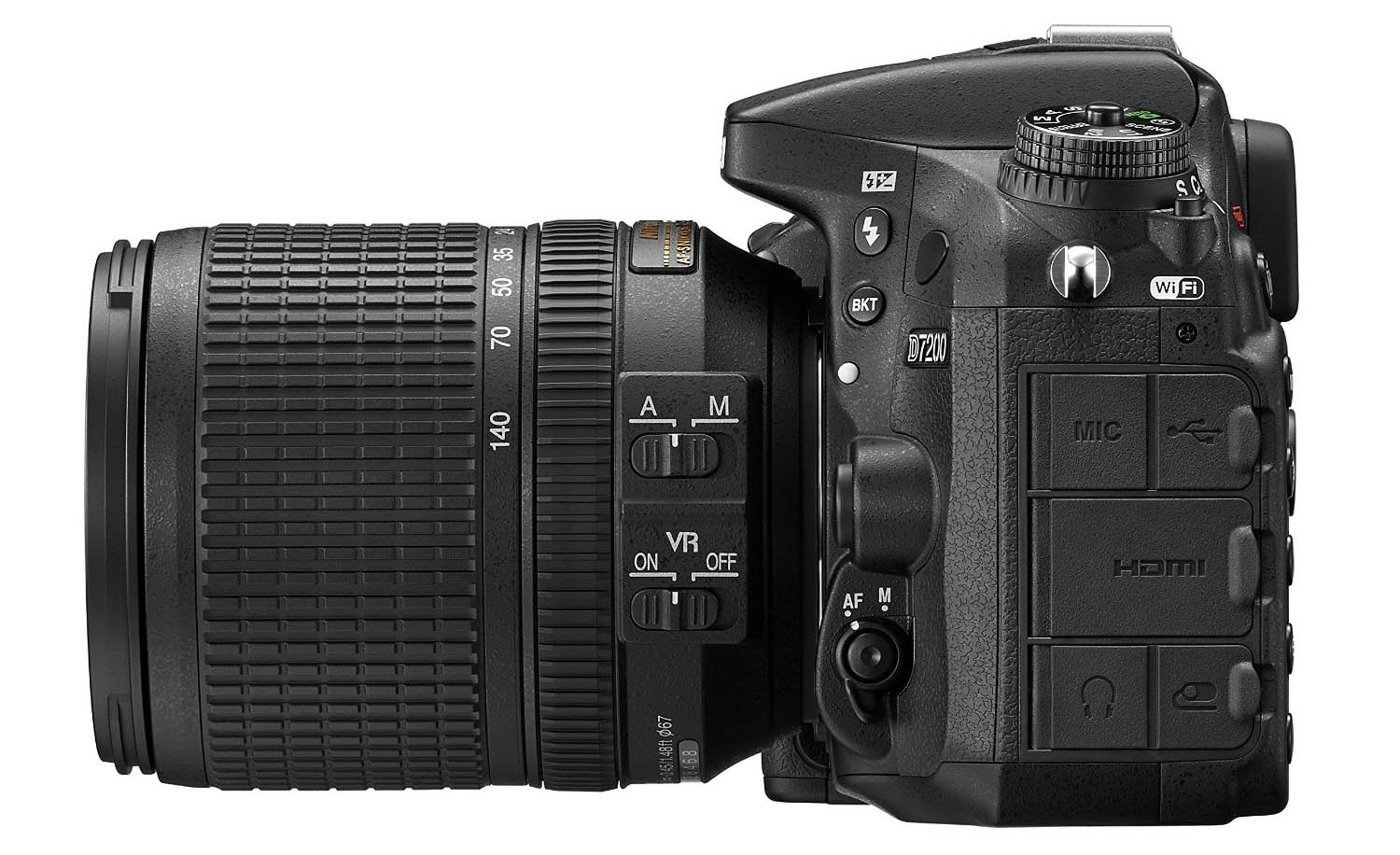
As on its predecessor, the D7200's body is weather-sealed against light rain as well as dusty or sandy conditions. You'll need an underwater housing if you want to immerse the camera in water, though.
With a 100 percent field of view, the optical viewfinder is a pleasure to use. Nikon enhanced the coatings on the viewfinder optics to deliver brighter and more accurate color.

A 3.2-inch, 640 x 480-pixel LCD works well under almost all lighting conditions, whether you're cycling through the menu, working with the information panel, composing a shot in live-view mode, or playing back still images or video clips. I would prefer a vari-angle (rotating) LCD like the one on the new Nikon D5500, however. Perhaps I'll get my wish in the next update.
Like its predecessor, the D7200 is equipped with a pop-up flash and hot shoe for external flashguns. In addition to a built-in stereo microphone, the camera offers a microphone jack, microUSB, HDMI, two SD/SDHC/SDXC card slots as well as compatibility with Nikon's new ME-W1 water-resistant wireless lavalier mic ($250).
Image Quality: Top notch
The D7200 offers excellent image quality right out of the box. Colors are accurate and pleasing; images are generally crisp with lots of good details (even with the kit lens), and the D7200's metering is, for the most part, spot on. Plus, it doesn't take much to draw even better image quality out of this camera, thanks to its sophisticated feature set.
In line with the current trend in DSLRs, the D7200 lacks an optical low-pass filter. The OLPF, also known as the AA filter, is designed to slightly soften images to reduce the risk of a wavy moiré effect seen on fine, repetitive patterns. But even without the filter, the D7200 delivers crisp images and no noticeable moiré.
Details of the little boy's straw hat are clearly visible in this image, as are the patterns on his and his dad's shirts, with no evidence of any anomalies.

I used the SD (Standard) Picture Control on the D7200's default settings for testing. However, for the best results when post-processing, Nikon's new Flat Picture Control option allows users to pull the best dynamic range for photos, and more easily implement color grading for video.
Even without the D7200's Active D-Lighting, which helps maintain details in shadows and highlights, the D7200 generally exhibited very good dynamic range. Other than the overexposed hot spot on this little turtle's shell, this bright afternoon image shows clear details in both shadow and highlight areas.
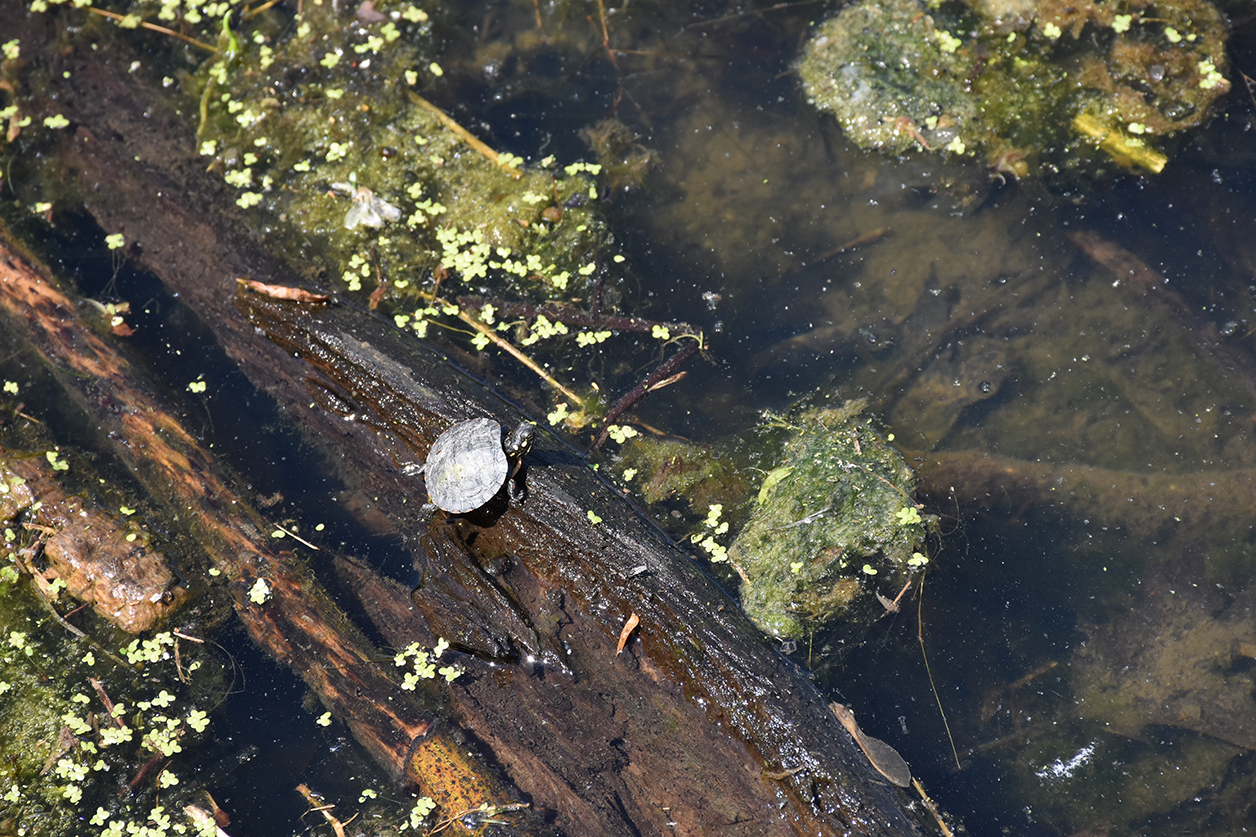
Check out the cropped image of this little guy's head to see how well the D7200 and kit lens capture fine details and how little of the shell is fully blown out.

The D7200's exposure metering did a great job with this challenging scene, rendering an evenly balanced exposure and fine dynamic range. Although it's difficult to see the details in the goose's black feathers, the brown feathers on the back and the white feathers on its hindquarter are nicely detailed. Typical of the D7200, colors are well-saturated and rich without being overly vivid.
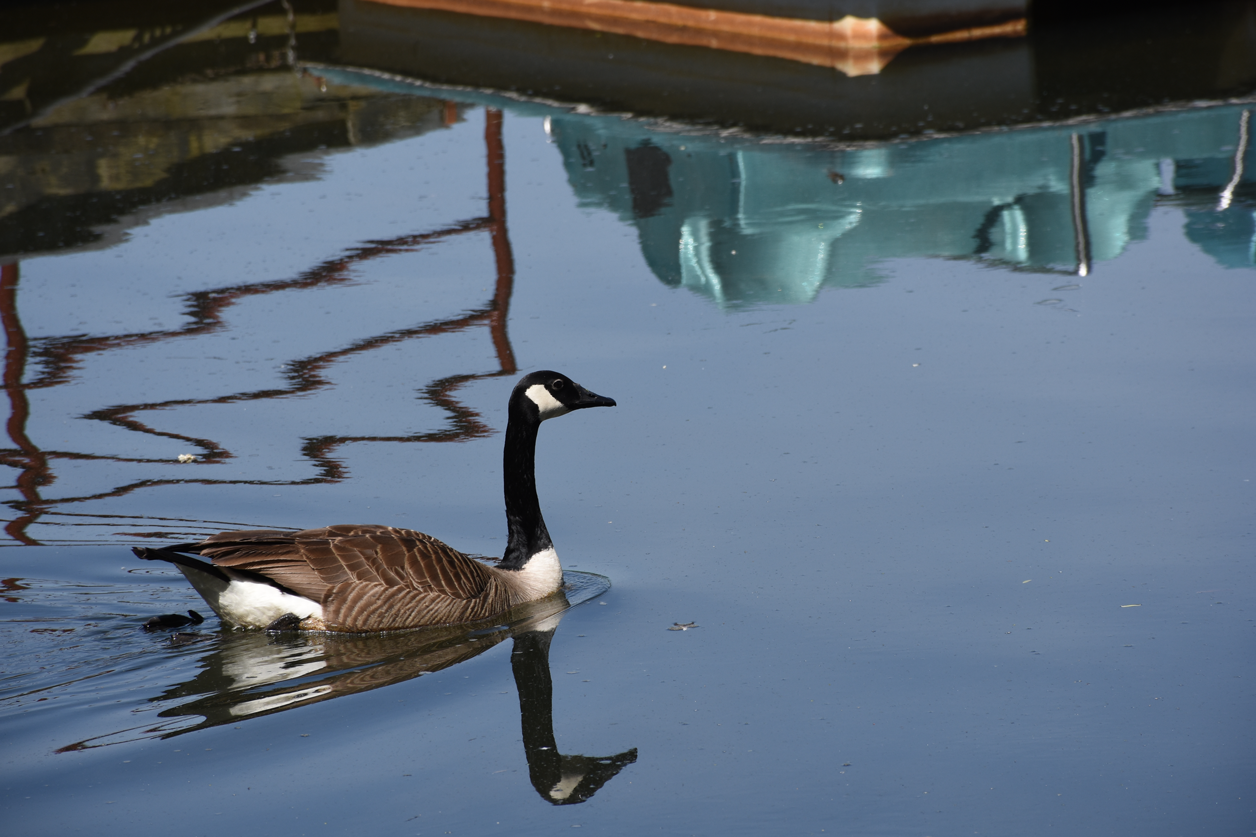

Low Light: More ISO range
Overall, the D7200 handled low-light and high-ISO conditions extremely well. Depending on the shot, and your aesthetics, images captured at ISO 3200 (and perhaps 6400) should make good prints at standard (8 x 10 inch) sizes.
While the D7100 topped out at a native light sensitivity of ISO 6400, the new model can be set to ISO 25,600 — four times the sensitivity. For superdark conditions, you can expand the D7200's sensitivity to Hi1 (51,200) and Hi2 (102,500) ISO, but only in black and white.
MORE: Best DSLR Cameras From Beginner to Pro
At the same time, the D7200's autofocus system can now focus under low light down to -3EV versus the D7100's -2EV. That means that the camera can achieve focus in half as much light (one stop darker), which comes in handy for night owls (more on that later).
I'm not a fan of in-camera noise reduction and prefer to tweak any image noise in Adobe Camera Raw software. But for most test shots, I left the D7200's NR set at Low or Normal. Noise reduction softening was less intrusive than we've seen from other DSLRs, including the Nikon D5500, thanks in part to the D7200's new EXPEED 4 image processor.

As you can see from the images below, details were fairly well-maintained with the D7200's NR setting turned to Low. This carving is surprisingly free of image noise despite being shot at ISO 3200. Details, such as the bird's eye, are sharp and clean, with little softening effect from in-camera noise reduction.
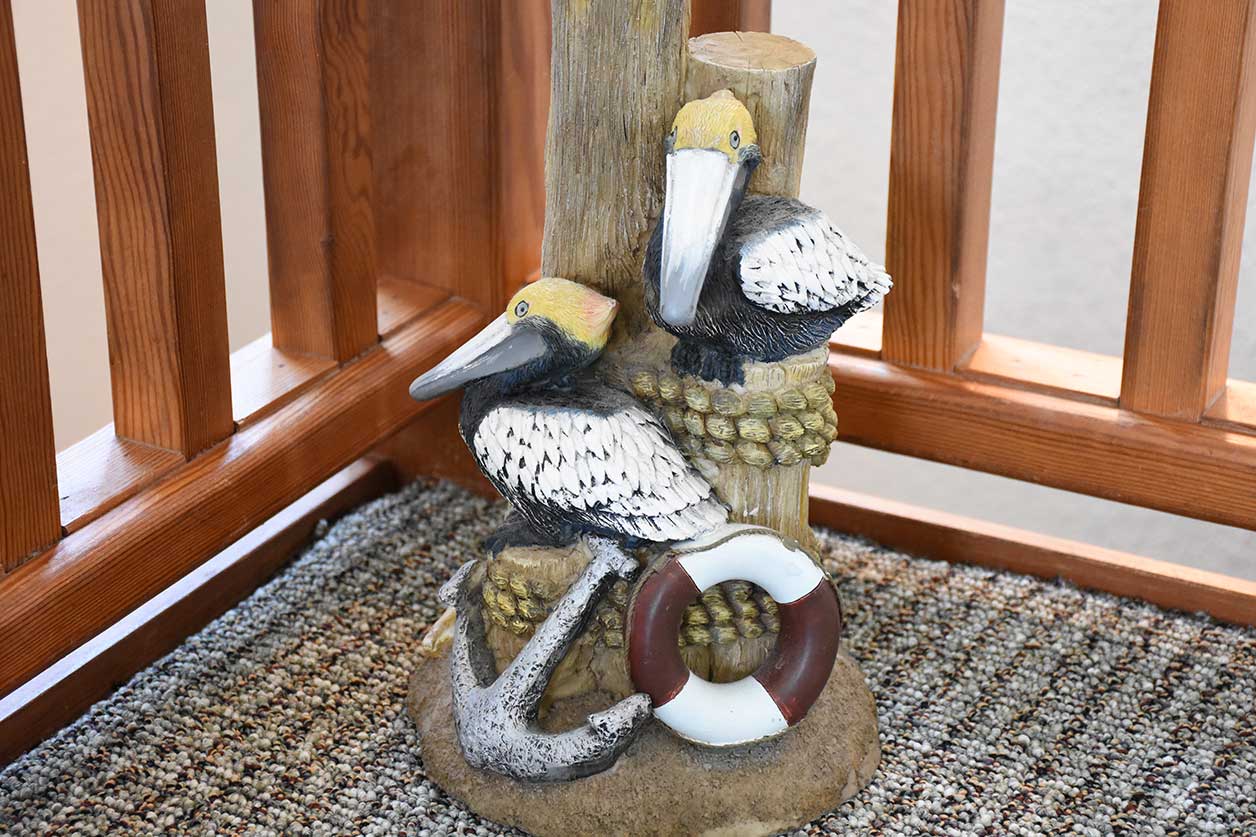
At ISO 8000, with NR set on Normal, image noise is much more visible, as is the softening effect of in-camera noise reduction. Slight vignetting is also noticeable in the corners. However, the carving marks of this Kachina doll are still visible throughout.

Autofocus and Speed: Solid performance
One of the major complaints lodged against the D7100 was a buffer that limited continuous JPEG capture to about 33 images. Thanks to the D7200's latest EXPEED 4 image processor, the new model has increased its buffer capacity to 100 large/fine JPEG images. NEF (RAW) file continuous capture has also been extended to 27 shots, while the D7100 was limited to seven.
Continuous shooting speeds of up to 6 fps are the same as with the D7100 but are fast enough to capture a wide variety of action shots.
The camera's burst mode and continuous autofocus worked well enough to capture these young horse riders as they navigated around precisely placed markers.


Autofocus and overall operation using live view and its contrast-detection autofocus were understandably less responsive, but fine for shooting static scenes such as landscapes.
Video Quality: Moderate control, pleasing quality
The D7200 produced sharp video clips with accurate color and very few anomalies. Rolling shutter (a stretched appearance to moving subjects) was pretty much nonexistent, and continuous autofocus generally kept up with moving subjects, such as the young woman riding a horse in the image below. You can catch a quick refocus during the clip but it was minor (and possibly the result of user error if my finger slipped off or on the shutter button during filming).
The D7200 offers a basic range of video options including full-HD 1920 x 1080p, now with the ability to capture up to full HD at 60 fps. The 60 fps rate requires shooting in 1.3x crop mode, meaning the video looks a bit more zoomed in than if you shot at 30fps.
Keep in mind, though, that the 1.3x crop cuts the maximum recording length by more than half, to 10 minutes. The D7200 can also shoot up to 20-minute clips in 1080p at 30, 25 and 24 fps; in 720p at 60 and 50 fps; and in VGA at 30 and 25 fps.
Exposure control while shooting video is limited to shutter speed. ISO is automatically adjusted during capture to ensure smooth transitions between lighting conditions. All other settings need to be selected beforehand. Flat Picture Control is available, which makes color grading easier in the editing phase.
While the video adjustment limitations are a bit disappointing, the D7200 offers a number of other features, including a headphone jack for monitoring audio and the ability to adjust headphone volume. Microphone sensitivity is adjustable, and sound level measurements, time remaining and other data are displayed on the LCD. Frequency response can be set to Wide for ambient noise or Voice to better record speech, and wind noise reduction can be turned on or off.
New to the D7200 is zebra striping, an overlay for judging exposure and highlights. Video can also be displayed simultaneously on the LCD monitor and an external monitor when you're working with a team or want to have a larger view.
Audio capture was, for the most part, crisp and clean, even on a slightly windy day. The sounds of rushing water and chirping birds are clear and bright using the built-in stereo microphone.
Another video in low light captured clear sound and video, although the auto white balance was again a little off. But there was little visible image noise even though the ISO was, at one point, automatically boosted to 20,000.
Interval shooting and time lapse are available, capable of capturing up to 9,999 shots. Even better news is that Nikon's exposure smoothing (which automatically compensates for changes in lighting conditions) is available in the Time Lapse Mode to ensure evenly exposed images throughout.
Controls: Standard Nikon
The control layout on the D7200 is typical Nikon, which is a good thing. The DSLR sports forward and rear dials. In addition to adjusting exposure (shutter speed and/or aperture), the dials are also used to cycle through and select parameters such as white balance, image quality, ISO and menu options. These are probably the most-often-used controls on the camera and are perfectly placed for quick and easy access.
An Effects option on the Mode dial provides access to specialty shooting effects such as Lo Key, Hi Key, Selective Color and Miniature for photographers who prefer built-in creative tools. A nonflash mode (perfect for museums) and two custom User modes (in which you program shooting parameters) round out the Mode dial. Several buttons, including the dedicated Movie button, as well as the command dials, can also be customized to trigger different functions.
The D7200's menu system is extensive but easy to navigate once you're familiar with Nikon's logical hierarchy. Like other, newer Nikon DSLRs, still-image and video options are now available in separate menu tabs, making it easier to set parameters for each.
Wireless: Easy but basic access
As it has with all its DSLR updates, Nikon has added Wi-Fi to the D7200. Setup is simple once you've downloaded the free WMU (Wireless Mobile Utility) app for iOS or Android devices. It's even easier if you have a compatible NFC-equipped Android device, since you can automatically connect the two by touching the phone or tablet to the camera's NFC antenna (marked by an "N" on the right side of the camera). For iOS, you'll have to locate and log in to the camera network on your phone or tablet, then open the WMU app.
MORE: DSLR vs. Mirrorless Cameras: Which Is Better for You?
Unfortunately, the app's functionality is pretty basic. You can trigger the camera's shutter remotely, and save and wirelessly transfer still images (RAW files are saved as JPEGs). Although you can see the camera settings (e.g., shutter speed) on the mobile device, you can't change them remotely. Location information can be added utilizing the connected phone's GPS.

Battery Life
While the D7200 uses the same battery as its predecessor, a single charge now supports up to 1,110 shots per CIPA standards (more if you don't use the flash), which is a nice jump from the D7100's capacity of 950 shots. You'll lose about 20 minutes of video though, since the battery is estimated to last for about 80 minutes versus the D7100's 100 minutes. If you plan to shoot a lot of video, you might want to pick up a second battery.
Lenses and Accessories
Nikon offers more than 80 lenses that are compatible with the D7200. It can take both the DX-format lenses for cameras (like itself) that sport mainstream (APS-C) sensors, as well as the FX lenses that also fit Nikon's full-frame cameras, like the professional D810. I paired the new full-frame (FX) and lightweight NIKKOR 300mm f/4E PF lens ($2000) with the D7200 and, because of the lens' smaller sensor, gained an extra 150mm on this amazing telephoto lens, bringing it to an effective 450mm focal length.
While not everyone will want to spend $2000 on a prime telephoto lens, the $500 18-140mm kit lens provides a useful range for most day-to-day shooting, though it's a little slow, at f/3.5-5.6. Taking the crop factor into account on the APS-C D7200, the kit lens delivers a full-frame equivalent focal range of 27-210mm. VR (vibration reduction) is relatively effective, and this lens generally delivers sharp images across the frame.
Videographers will want to check out the new Nikon ME-W1 water-resistant wireless lavalier microphone ($250) with its far-reaching, 164-foot range. A variety of lighting solutions and other accessories are available as well.
Bottom Line
A full feature-set and solid performance — from autofocus to continuous shooting — are only some of the D7200's strong points. This DSLR also delivers excellent color rendition, sharpness and exposure, particularly at lower ISOs.
Despite a few shortfalls, such as limited manual exposure control in video, the D7200 is a solid update to its predecessor. The Canon EOS 70D has an edge in terms of video capture, but if you're a Nikon shooter and want a midrange DSLR, the D7200 is for you.
Key Specs
Model name: Nikon D7200
Megapixels: 24.2
Type: DSLR
Price: $1,199.95 (body only); $1,699.95 (with 18-140mm f/3.5-5.6G ED VR lens)
Shots per sec: Up to 6 fps full resolution; 7 fps in 1.3x crop mode
Sensor type: APS-C CMOS
AF points: 51 with 15 cross-type sensors
Shutter speed range: 1/8000-30 sec, Bulb
ISO range: 100-25600 (expandable to 51,200 and 102,500 equivalent in black and white only)
Main video resolutions/frame rates: full HD 1920 x 1080 at 60 and 50 fps in 1.3x crop mode only); 1920 x 1080 at 30, 25, 24 fps; 1280 x 720 at 60, 50 fps; VGA 640 x 424 at 30, 25 fps
Video file format: .MOV
Built-in flash? Yes
Hot shoe: Yes
Card type: Dual slot SD/SDHC/SDXC
Ports: High-speed USB, HDMI, accessory terminal, stereo mic input
Shots per charge (CIPA): 1,110 (stills); approx. 80 minutes HD footage
Wireless capabilities: Wi-Fi/NFC
Image stabilization: Lens dependent
Dimensions and weight: 5.3 x 4.2 x 3.0 inches; 1 pound, 11 ounces (body only)
- Best Photo-Editing Software From Beginner to Pro
- How Many Megapixels Do You Really Need?
- How to Take Great Photos with a DSLR or Mirrorless Camera
Follow Tom's Guide at @tomsguide, on Facebook and on Google+.
Theano Nikitas is a freelance journalist and photographer. She's been writing about photography for more than 20 years, contributing countless reviews of cameras, lenses, accessories and software packages to Tom's Guide. Her work has also appeared in dozens of other magazines and websites, including CNET, DPreview, PopPhoto, Professional Photographer and Shutterbug.
